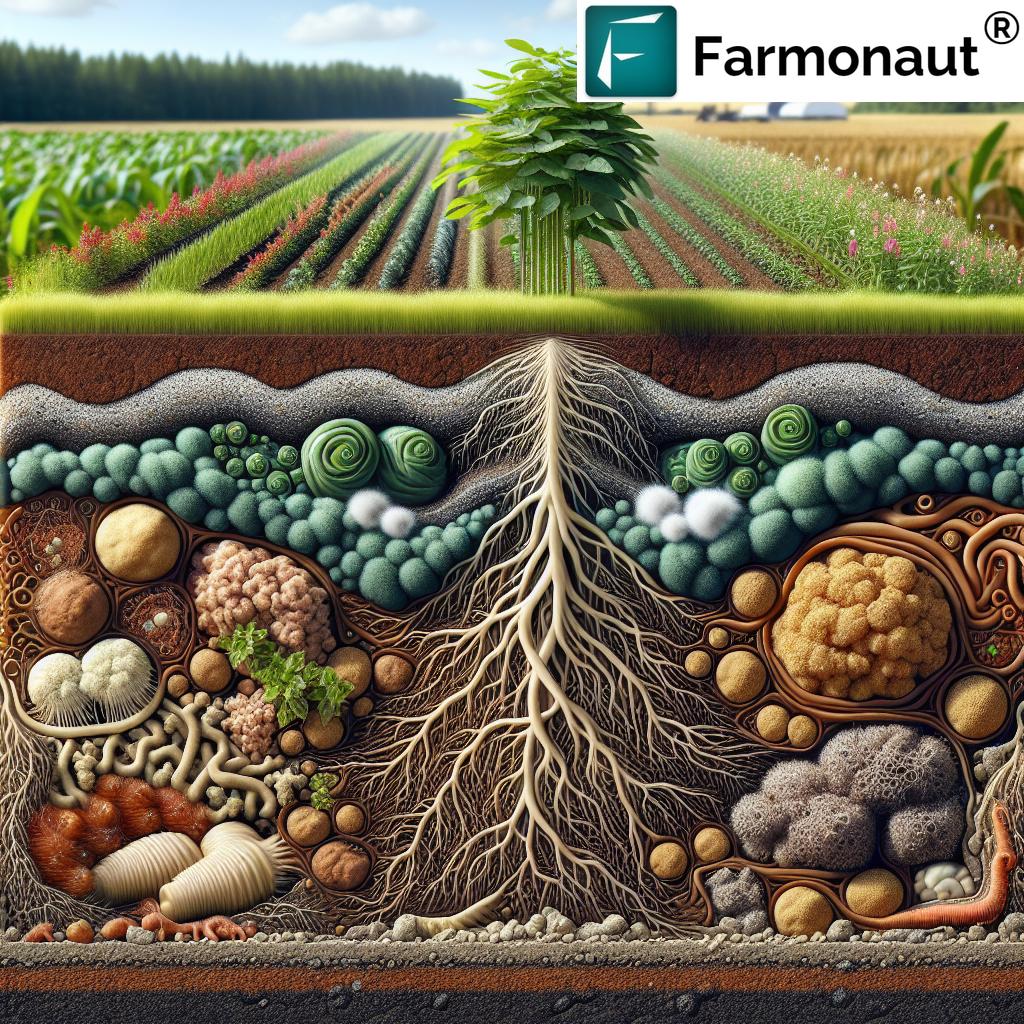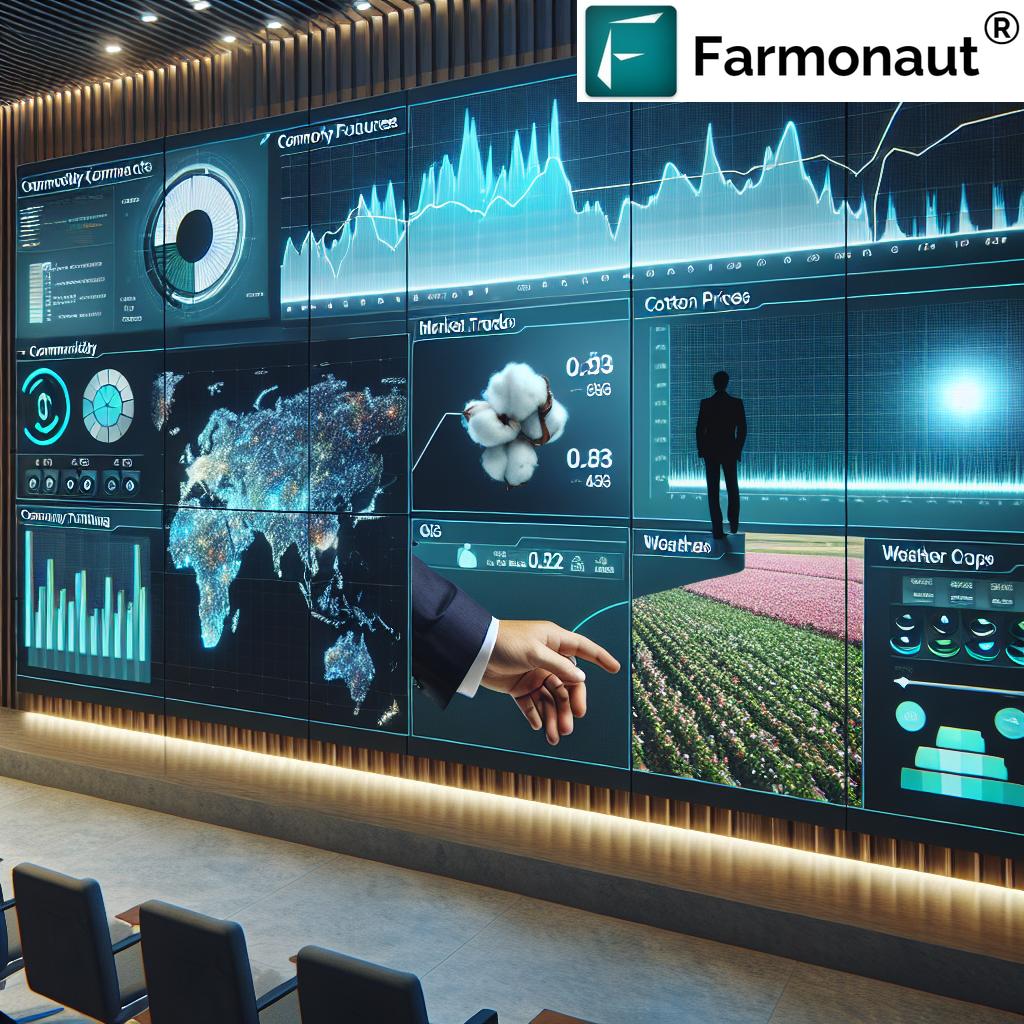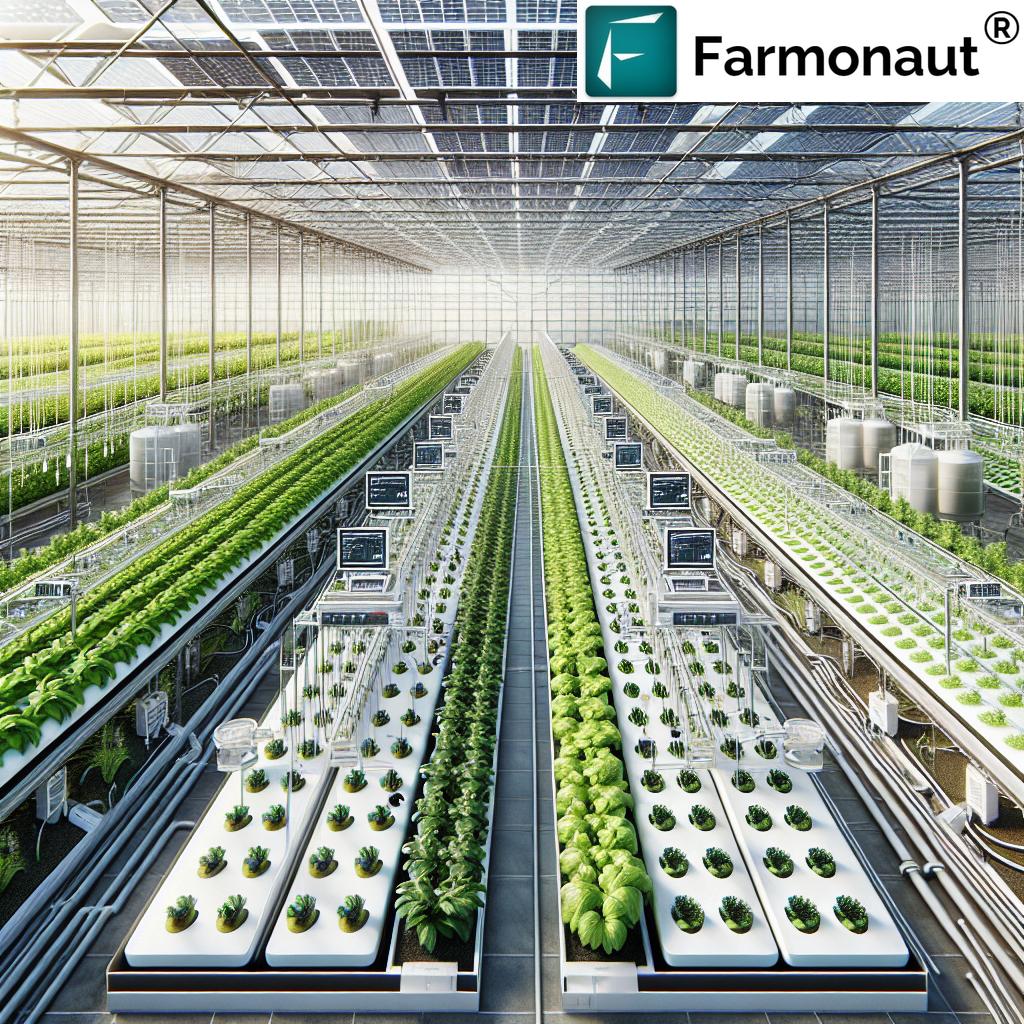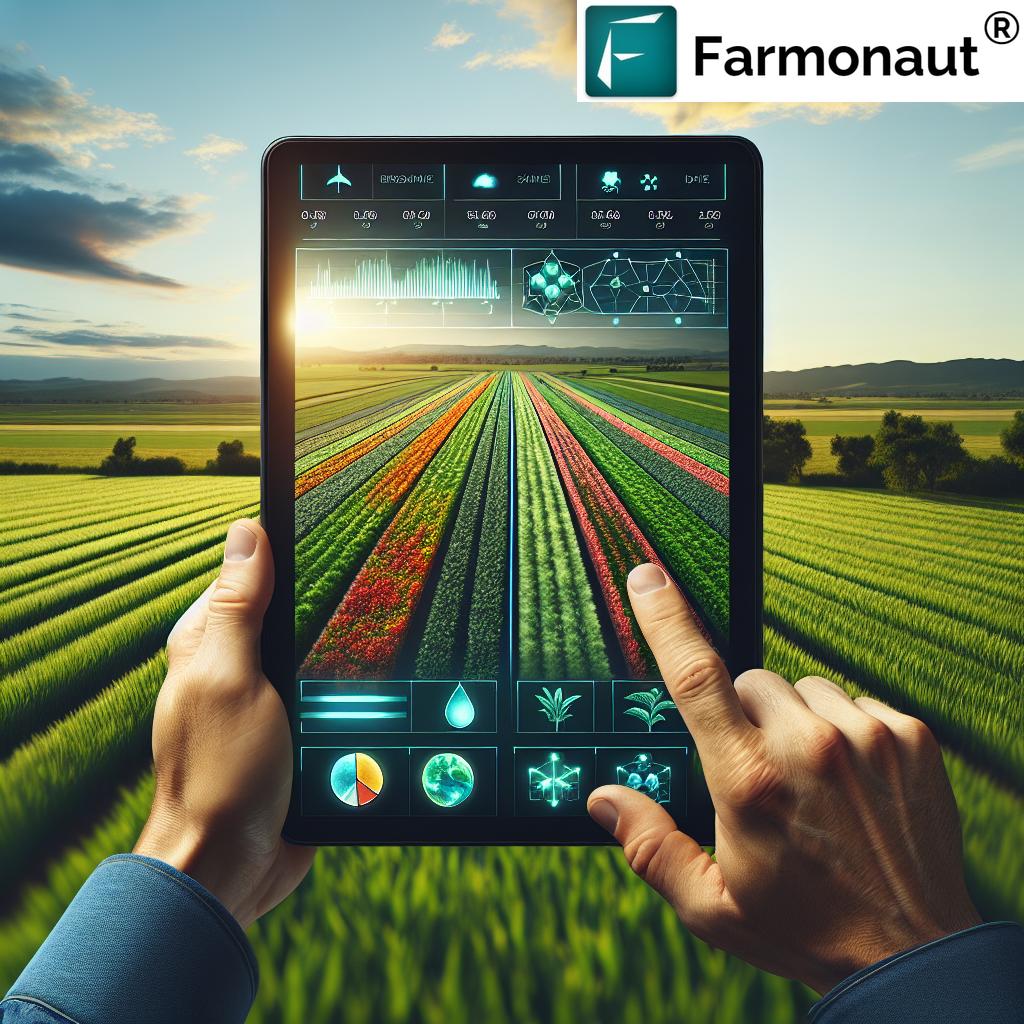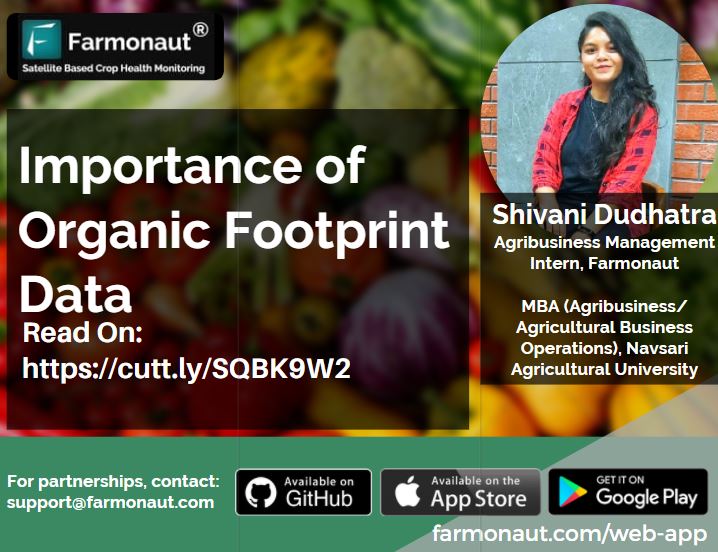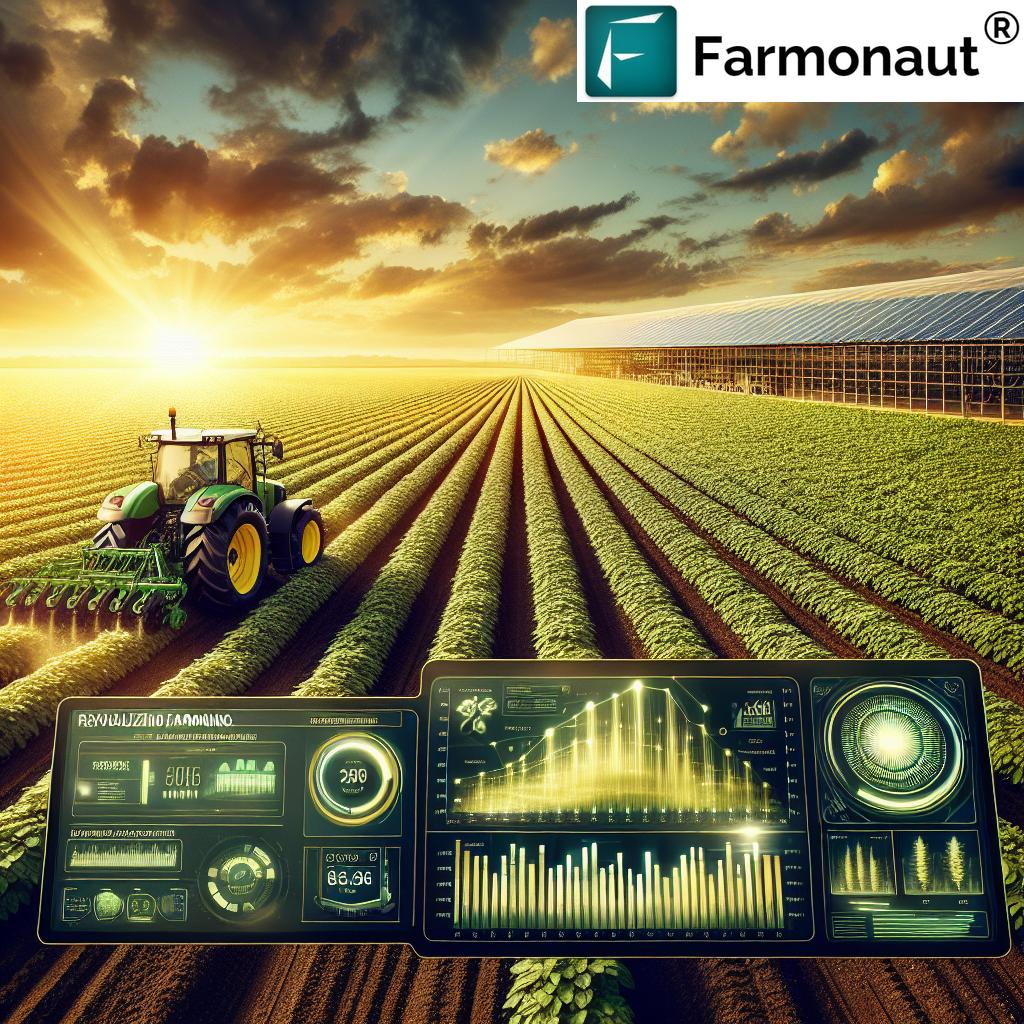Organic Carbon: 7 Shocking Tricks for Super Soil Health
“Just a 1% increase in soil organic carbon can boost crop yields by up to 12%.”
Table of Contents
- Introduction: Why Organic Carbon is Key for Super Soil Health
- What is Organic Carbon?
- Soil Organic Carbon Dynamics and Soil Health
- 7 Shocking Tricks for Super Soil Health
- Organic Carbon in Agriculture: Sustainable Farming Practices
- Organic Carbon in Forestry & Agroforestry
- Climate Change Mitigation in Agriculture: Carbon Sequestration & Beyond
- Comparative Impact Table: Sustainable Practices & Soil Organic Carbon
- Farmonaut’s Advanced Tools for Carbon, Soil Health & Sustainability
- Challenges, Trade-Offs & Considerations
- FAQ: Your Organic Carbon, Soil Health & Farm Management Questions Answered
- Conclusion: Our Path Forward with Organic Carbon
Introduction: Why Organic Carbon is Key for Super Soil Health
At the intersection of agriculture, climate, and sustainability stands one unassuming hero: organic carbon. Whether we’re nurturing fields for abundant harvests, stewarding forests for biodiversity, or seeking climate change mitigation in agriculture, organic carbon underpins the health, fertility, and resilience of the world’s soils.
It’s not just scientific theory—decades of research and recent real-world advances (like those from Farmonaut) show that by understanding soil organic carbon (SOC), we can unlock dramatic boosts in soil structure, plant growth, carbon sequestration, and agricultural productivity. As our planet faces environmental challenges, the role of organic carbon in soil becomes ever more urgent and essential.
In this comprehensive guide, we’ll show you why investing in organic carbon is not just good science—it’s a wise strategy for any farmer, forester, or land manager. We’ll reveal the seven most effective, research-backed tricks to supercharge your soil health, support global climate objectives, and future-proof your production system.
“Globally, soils store over 2,500 gigatons of carbon—more than all plants and the atmosphere combined.”
What is Organic Carbon?
Organic carbon refers to a broad range of carbon compounds formed by living organisms—primarily plants and animals. In the context of soils, we specifically talk about soil organic carbon (SOC), which is the carbon component of soil organic matter (SOM). SOC is created as plant material, roots, crop residues, and animal waste decompose, mixing with soil minerals and forming a complex web that fuels all life below ground and above.
- SOM is the total organic matter in soils, while SOC is the carbon portion of that organic matter.
- SOC is measured as the amount of carbon per unit weight of soil (e.g., grams per kilogram or tonnes per hectare).
- SOC directly influences soil health, fertility, and ecosystem services such as water retention, nutrient cycling, and climate change mitigation.
Globally, soils store more carbon than all vegetation and the atmosphere combined—making them the world’s largest terrestrial carbon sink. Understanding and managing SOC is vital not only for productive agriculture and forestry but also for environmental stewardship and climate resilience.
Soil Organic Carbon Dynamics and Soil Health
The dynamics of soil organic carbon—how it enters, accumulates, moves, and is lost from the soil—determine soil health, fertility, and productivity. Understanding these dynamics equips us to make smarter decisions about land management, agricultural productivity, and climate strategies.
How Does SOC Influence Soil Health?
- Structure formation and aggregates: SOC promotes the formation of stable soil aggregates, improving soil structure. This results in superior water infiltration and more effective root penetration—both factors are crucial for growing resilient and healthy plants.
- Cation Exchange Capacity (CEC): Soils rich in SOC have better ability to retain and exchange essential nutrients, due to higher CEC, supporting vigorous plant growth and fertility.
- Nutrient retention and resilience: Higher SOC helps soils hold on to nutrients like nitrogen, phosphorus, and potassium, ensuring that nutrients are available when plants need them most.
- Water retention: Organic matter functions like a sponge, increasing soil’s ability to retain water, making crops and trees more resilient to drought.
- Microbial activity: SOC is food for beneficial microbes. More carbon means robust microbial activity, which drives nutrient cycling, disease suppression, and ongoing improvement in soil structure.
The upshot? When we optimize soil organic carbon levels, we create the foundations for highly fertile, productive, and resilient agricultural systems.
What Drives Soil Organic Carbon Dynamics?
- Input sources: Crop residues, plant roots, animal manure, cover crops, compost, and even biochar all add organic carbon to soils.
- Decomposition and mineralization: Microbes break down organic matter, releasing nutrients and carbon dioxide (CO₂), but also stabilizing some carbon as humus—a long-lasting form of SOM.
- Land management: Tillage, use of synthetic inputs, irrigation, and the balance between additions and losses determine net carbon gains or reductions.
- Climate and regional variations: Temperature, moisture, and soil type influence SOC accumulation rates. For example, humid regions with plenty of plant growth generally offer greater SOC build-up than arid areas.
- Soil depth: Most SOC is present in the topsoil (first 30 cm), but deep-rooting plants and trees can help sequester carbon deeper underground, making it less susceptible to loss.
Understanding these dynamics empowers sustainable management strategies in both agriculture and forestry.
7 Shocking Tricks for Super Soil Health Through Organic Carbon
Let’s break down the seven most powerful—and sometimes surprising—tricks for maintaining and building SOC, all grounded in science and proven to work in real-world land management.
-
Practice Reduced or No-Till Farming
By minimizing soil disturbance, we help aggregate formation, decrease carbon losses from oxidation, and foster the buildup of stable organic matter. Data shows no-till systems can increase SOC in topsoil by 11.3%, compared to conventional tillage.
-
Adopt Intensive Cover Cropping
Effects of cover cropping: Growing cover crops between main crop cycles provides a steady supply of plant residues, shields the soil from erosion, suppresses weeds, and feeds soil microbes. Cover cropping can rapidly increase SOC concentrations and enhance entire ecosystem functioning.
-
Apply Organic Amendments
Adding compost, manure, green waste, or biochar boosts soil organic carbon, improves nutrient content, and enhances water retention. Organic amendments are central to building a robust and healthy soil structure.
-
Integrate Crop Rotation and Plant Diversity
Diversified rotations keep carbon cycling through the system, disrupt pest and disease cycles, and build resilience. Plant diversity, including deep-rooted and nitrogen-fixing species, ensures carbon is added at multiple soil depths.
-
Practice Agroforestry and Silvopasture
By integrating trees, crops, and livestock, these systems balance productivity and carbon storage. Agroforestry carbon sequestration not only increases SOC but also adds biomass above ground, enhances biodiversity, and improves nutrient cycling through mycorrhizal associations.
-
Optimize Water and Nutrient Management
Efficient irrigation, improved drainage, and precise fertilizer application reduce stress on plants, boost crop and root growth, and prevent erosion and nutrient leaching. This helps organic matter accumulate, promotes resilience, and maintains soil and plant health.
-
Utilize Enhanced Weathering for Carbon Removal
The application of crushed basalt or similar silicate rocks accelerates soil mineral weathering, leading to long-term chemical sequestration of atmospheric CO₂ and improving soil fertility. It’s an emerging strategy with exciting potential for climate change mitigation in agriculture and building SOC stocks.
By implementing these seven strategies, we unlock a dramatic increase in soil organic carbon, soil health and fertility, sustainable production, and climate benefits!
Pro Tip: To plan and monitor forestry, agroforestry, or tree-planting projects effectively, leverage Farmonaut’s Crop Plantation & Forest Advisory Solutions—powered by satellite data for holistic, sustainable land management.
Organic Carbon in Agriculture: Sustainable Farming Practices & Soil Management
Organic carbon is essential in agriculture for supporting soil health and fertility. Agricultural systems that actively maintain or increase SOC lead to higher productivity, improved resilience to drought and disease, and greater sustainability.
Key Practices that Raise Soil Organic Carbon in Agriculture:
- Reduced Tillage: Protects soil structure, conserves SOC, and supports root development.
- Cover Cropping: Shields soil, reduces erosion, and continuously adds organic material.
- Organic Inputs: Use of compost, crop residues, and manure to build long-term organic matter stocks.
- Crop Diversity & Rotations: Promotes root biomass and microbial activity.
- Sustainable Irrigation: Maintains soil moisture, preventing loss of organic matter.
Research shows organic farming can lead to higher SOC concentrations than conventional farming methods. Combining reduced tillage, intensive cover cropping, and organic amendments offers the greatest gains in SOC while reducing environmental impacts.
Farmonaut’s Carbon Footprinting module enables farms to measure, track, and reduce their carbon emissions—integral for soil management for carbon storage and compliance with sustainability standards.
- Satellite imagery & AI-driven monitoring—get real-time insights into crop health, soil moisture, and management outcomes.
- Smart decision support—leverage Farmonaut’s AI advisory for precise interventions that optimize asset utilization, reduce input wastage, and enhance long-term soil and crop health.
For broader digital tools that integrate with your systems, check out Farmonaut’s API Access (API Developer Docs) to incorporate satellite data directly into your agricultural or environmental software.
Organic Carbon in Forestry & Agroforestry: Building Carbon Stocks for Soil and Climate
Forestry and agroforestry are dynamic fields where SOC management has immense impacts. Trees play a dual role: they fix carbon through photosynthesis (adding to above-ground biomass) and deposit organic material into soils through litterfall and deep roots—enhancing both short- and long-term carbon sequestration.
- Tree planting: Adds long-lived biomass and boosts SOC through increased litter and deeper roots. Species selection, rooting depth, and management approach are vital for building lasting soil organic carbon stocks.
- Agroforestry: By integrating trees, crops, and sometimes livestock, we build agroecosystems that support both productivity and ecosystem resilience. Agroforestry carbon sequestration increases as organic matter from both trees and crops accumulates above and below ground.
- Mycorrhizal associations: Trees and many crops form symbiotic relationships with mycorrhizal fungi. These microbes transfer nutrients and carbon between roots and the soil, accelerating SOC formation and aggregate stability.
- Forest management: Proper thinning, selective harvesting, and maintaining forest cover all safeguard and build soil organic carbon stocks by minimizing soil disturbance and encouraging litter input.
Utilizing Farmonaut’s Large Scale Farm Management Tools empowers both forestry managers and agricultural stakeholders to plan, monitor, and adjust practices for maximized carbon storage and sustainable production outcomes.
Climate Change Mitigation in Agriculture: Carbon Sequestration & Beyond
Healthy, carbon-rich soils are some of the planet’s most effective tools for climate change mitigation in agriculture. By increasing soil organic carbon levels, we transform soils into critical carbon sinks, drawing down and storing atmospheric CO₂. This not only builds resilience in farming systems but also supports global efforts to limit climate change.
- Soil as a CO₂ sink: Soils already sequester more carbon than the world’s forests or the atmosphere, but proper management can expand this role dramatically.
- Enhanced weathering for carbon removal: Adding crushed basalt accelerates natural chemical reactions that lock CO₂ into minerals—an innovative, low-energy strategy for removing CO₂ permanently from the cycle.
- Balancing sequestration with food production: The best strategies improve both soil health and yields, ensuring that climate change mitigation aligns with global food security goals.
Farmonaut’s Carbon Footprinting solution provides the precise data farmers and agribusinesses need to track, verify, and improve their environmental impact—essential as carbon markets and sustainability certifications gain traction.
Blockchain-based traceability is equally important. Farmonaut’s Traceability Module enables transparent tracking of produce from field to fork, increasing trust, reducing fraud, and showcasing environmental responsibility—a critical driver for environmentally conscious consumers and global brands.
Comparative Impact Table: Sustainable Practices, Soil Organic Carbon & Climate Benefits
| Practice | Estimated Increase in SOC (%) over 5 Years | Improvement in Soil Fertility (Estimated Yield Increase %) | CO₂ Sequestration Potential (tons/ha/year) | Environmental Benefits |
|---|---|---|---|---|
| Cover Cropping | 5–14% | 8–15% | 0.6–1.3 | Prevents erosion, boosts biodiversity, improves nutrient cycling |
| Reduced/No-Till Farming | 9–12% | 6–10% | 0.7–1.2 | Maintains soil structure, boosts water retention, cuts GHG emissions |
| Crop Rotation | 4–10% | 7–11% | 0.5–1.0 | Improves pest management & resilience, increases root biomass |
| Organic Amendments (Compost, Manure) | 10–25% | 12–18% | 0.8–1.5 | Boosts nutrient content, stimulates microbial life, improves water dynamics |
| Agroforestry | 15–25% | 15–20% | 2.0–4.5 | Increases biodiversity, stabilizes soils, improves ecosystem services |
| Enhanced Weathering (Basalt) | 5–12% | Variable, up to 10% | 1.0–3.0 | Permanently removes CO₂, boosts nutrient supply, supports long-term resilience |
Farmonaut’s Advanced Tools for Carbon, Soil Health & Sustainability
At Farmonaut, we’re committed to making precision agriculture accessible and affordable, empowering farmers and agribusinesses worldwide to harness the potential of soil organic carbon and sustainable practices.
- Satellite-based real-time monitoring: Track crop health, soil organic carbon changes, and moisture dynamics to validate management practices and respond quickly to risks.
- Jeevn AI Advisory: Real-time, AI-driven recommendations to optimize crop and soil health, irrigation, fertilization, and planting for both yield and ecosystem benefits.
- Blockchain traceability: Build consumer trust and transparency with field-to-fork traceability, showing off your commitment to sustainable and climate-smart agriculture (learn more).
- Resource and fleet optimization: Farmonaut’s Fleet Management module ensures machinery, water, and fertilizer applications are efficient, lowering both operational costs and carbon footprint.
- Carbon emission tracking: Our Carbon Footprinting Solution delivers enterprise-grade emission reports for every hectare monitored, supporting ESG, certification, and climate claims.
- Flexible platforms & APIs: Desktop, mobile, and API-based integration puts data-driven sustainability in every farmer’s and agribusiness’ hands.
Access your full suite of solutions via the Farmonaut App:
Looking for seamless integration into your own digital systems or enterprise platform? Our robust API and detailed developer documentation make satellite and weather data instantly accessible!
Challenges, Trade-Offs & Considerations in Increasing SOC
- Need for tailored management: Not all soils, climates, or crops respond the same way to SOC-building practices. Precision tools (like those from Farmonaut) help us develop region- and site-specific strategies for optimal results.
- Potential trade-offs: Rapid expansion of organic farming without cover cropping or rotations may not always increase SOC. Balanced, integrated approaches win out over piecemeal tactics.
- Food production vs. carbon storage: Maximizing carbon sequestration shouldn’t come at the cost of food security—integrated, outcome-based strategies benefit both.
- Long-term monitoring: Building SOC is often a multi-year process. Short-term changes may be small, but sustained commitment yields exponential, compounding benefits.
- Regional and climactic variation: SOC dynamics differ by location; what works in a humid region may not suit a drier climate, highlighting the role of local data and adaptive soil management for carbon storage.
That’s where scalable digital solutions and accurate monitoring (like Farmonaut’s Carbon Footprinting solution) add lasting value.
FAQ: Your Organic Carbon, Soil Health & Farm Management Questions Answered
1. What is the difference between soil organic carbon (SOC) and soil organic matter (SOM)?
Soil organic matter (SOM) includes all organic substances in the soil—plant material, animal residues, decomposed products, and microbial biomass. Soil organic carbon (SOC) is specifically the carbon fraction within SOM and is often used as a measurable indicator of soil health, fertility, and carbon sequestration in agriculture.
2. How can I measure SOC changes on my farm or land?
SOC can be measured via laboratory soil tests or, increasingly, by using digital tools and satellite data. Farmonaut offers satellite-based and AI-powered SOC monitoring, making it easier to track changes, set benchmarks, and optimize farming practices for enhanced carbon storage and soil health.
3. Are all practices that increase SOC also good for yields and profitability?
Most SOC-building practices—such as cover cropping, reduced tillage, and the use of organic amendments—also improve water retention, nutrient supply, and resilience, which generally benefits yields and farm profitability. However, results depend on site-specific factors, making monitoring and adaptive management key to maximizing benefits.
4. Can soils lose carbon as well as gain it?
Absolutely. Land degradation, excessive tillage, and removal of crop residues can lead to significant SOC losses—undermining soil health and increasing CO₂ emissions. That’s why it’s vital to use sustainable, conservation-based farming and forestry practices alongside ongoing monitoring.
5. Does organic carbon management differ regionally?
Yes—SOC dynamics and the effectiveness of different practices vary by soil type, climate, cropping system, and management history. Advanced, localized data and AI tools such as those offered by Farmonaut help tailor solutions for every region, farm, and ecosystem.
6. How does enhanced weathering (e.g., basalt application) work for carbon removal?
Enhanced weathering involves applying crushed silicate rocks such as basalt to soils. These minerals chemically react with atmospheric CO₂, locking it into stable forms while also releasing essential nutrients. This promising practice offers dual benefits for soil fertility and atmospheric CO₂ sequestration.
7. Where can I access digital tools for SOC monitoring and sustainable farm management?
You can register and access Farmonaut’s satellite-based farm management tools via Farmonaut Web & Mobile Apps (available for Android and iOS), and also use their API for integrating data into your own agricultural management platforms.
Conclusion: Our Path Forward with Organic Carbon
Organic carbon is the beating heart of soil health and fertility, sustaining agriculture, forestry, and our planet’s ability to mitigate and adapt to climate change. By embracing proven, sustainable farming and land management practices, we can increase soil organic carbon stocks, support productive agricultural systems, bolster food security, and make a meaningful contribution to the world’s climate response.
Digital innovation—like Farmonaut’s satellite monitoring, AI-powered insights, blockchain-based traceability, and real-time resource optimization—unlocks a new era for precision agricultural management, reducing costs and making sustainability both practical and profitable.
Together, as farmers, managers, advisors, and stewards, we must leverage both ancient wisdom (like composting and cropping diversity) and cutting-edge technology to build a thriving agricultural future for all.
Let’s supercharge our soils—one carbon atom at a time—and sow the seeds for generations of abundance, health, and climate resilience.





